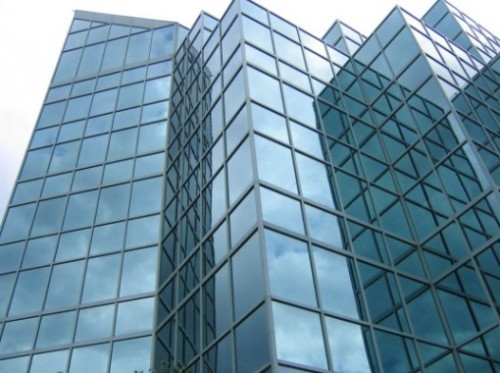Perhaps you have plans for putting up a garage on your property. Or you’re involved with the management of a local community-based organization in need of new facilities. Maybe you’re finally deciding to bring a small business dream into reality and need a workshop or office. In any case, if you’re a frequent visitor of this site then you’re going to care about the environmental impact and eco-friendliness of any decisions made relating to construction.

The possibilities of building with steel are more plentiful than you might first assume. Although businesses and consumers looking to buy metal garages and other prefabricated structures make up the bread and butter of the industry, steel buildings come in all shapes and sizes. Newly built restaurants, retail stores, shopping centers and even health clinics are increasingly being made with steel. This is due to an increased awareness in the cost-benefit of building projects as well as their lowered environmental impact.
If you seek a green building material, then look no further than steel. It’s 100% recyclable and loses no strength in the process. Thus 90% of steel used in construction is material existing in its third, fourth, or fifth incarnation. Recycling steel has been happening for over a century. Therefore it’s even possible that the steel of a particular piece of modern building material was originally created in the late 19th century or earlier.
Here are a few ways in which steel structures, whether they’re garages or aircraft hangars, stand to be greener than buildings made from alternative materials:
- Conservation: You could use the steel of roughly 60 junked automobiles to build a structure which would require 10 acres of wood for the same space. Needless to say, utilizing a recycled and readily-available building material over one which requires consuming precious and limited resources is a sure path to erecting an eco-friendly structure.
- Repurposing: Many components of steel structures, especially those which are prefabricated, can be reused without melting and recasting. A steel sheet once used for paneling an interior wall could wind up becoming roofing material in another life. This occurs right down to the nuts and bolts. Thus even within the world of recycling, steel is a prime example of reuse efficiency.
- Insulating: Metal buildings, steel chief among them, contain relatively large cavities within walls compared to brick and wood structures. This provides more room to install more insulation. More insulation means less interior lost to the outside, which means reduced energy costs over time.
- Reflecting: Steel shines. On a steamy summer day steel structures reflect the sun’s rays away from the building, greatly reducing the demand placed on air conditioning systems in operation. Again, this is a prime source for energy savings in the long-run.
- Low-Maintenance: Steel structures are easier to maintain all-around than alternatives, especially those made from wood. Wood of course is an organic material which attracts mold, termites, and other destructive forces. Steel on the other hand is immune to these threats. This results in less dependence on toxic chemicals and other environmentally unfriendly resources to keep your building in tip-top shape.
Steel is one of the most prevalent building materials in the whole world. It’s also the most efficiently recycled one. Nothing beats it in terms of reduced environmental impact and maximized eco-friendliness. Better still, steel buildings big or small, prefab or custom ordered, have never looked better nor been designed more optimally for further energy efficiency. When it comes to green building materials, nothing beats the strength of steel.

COMMENTS